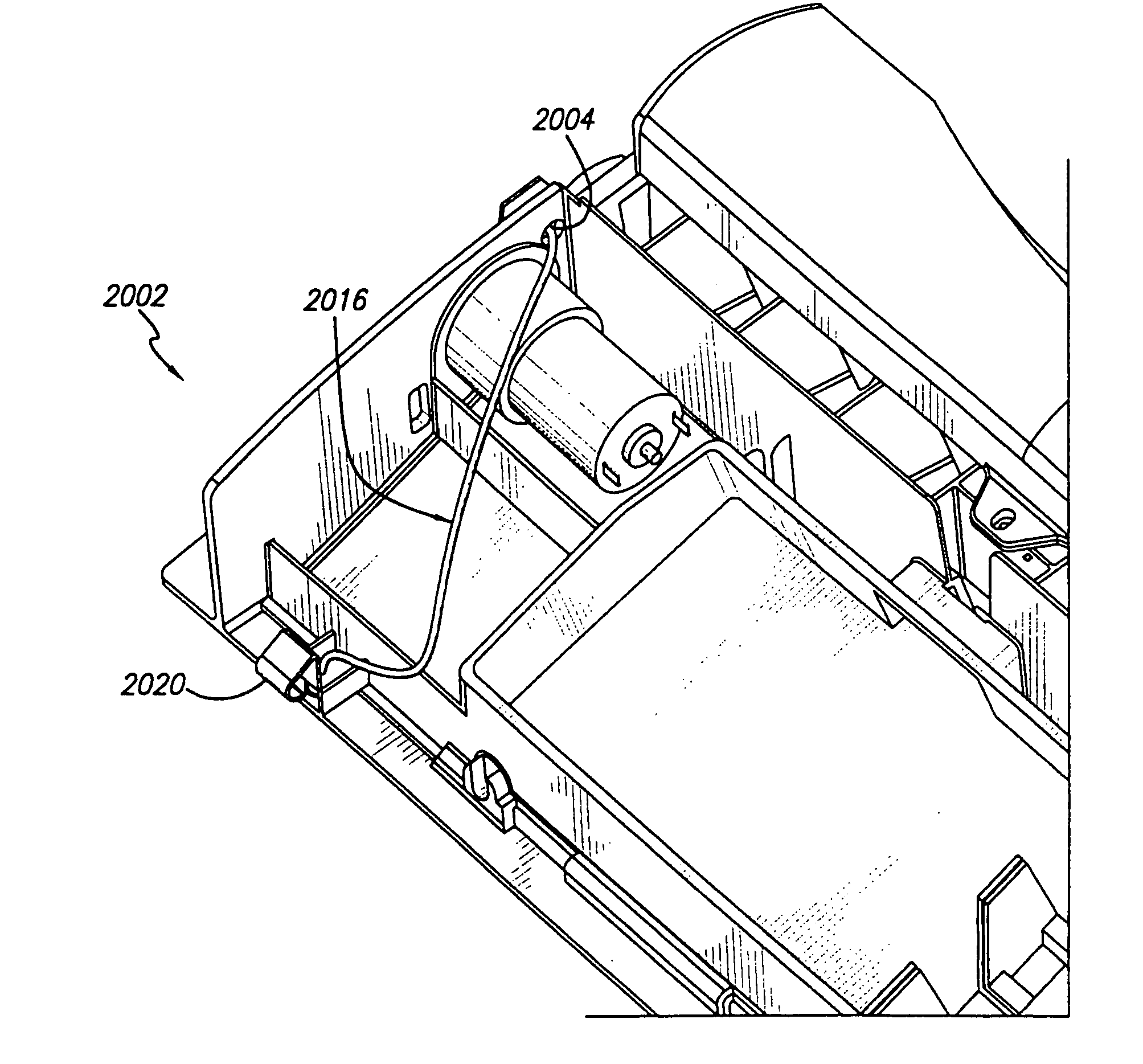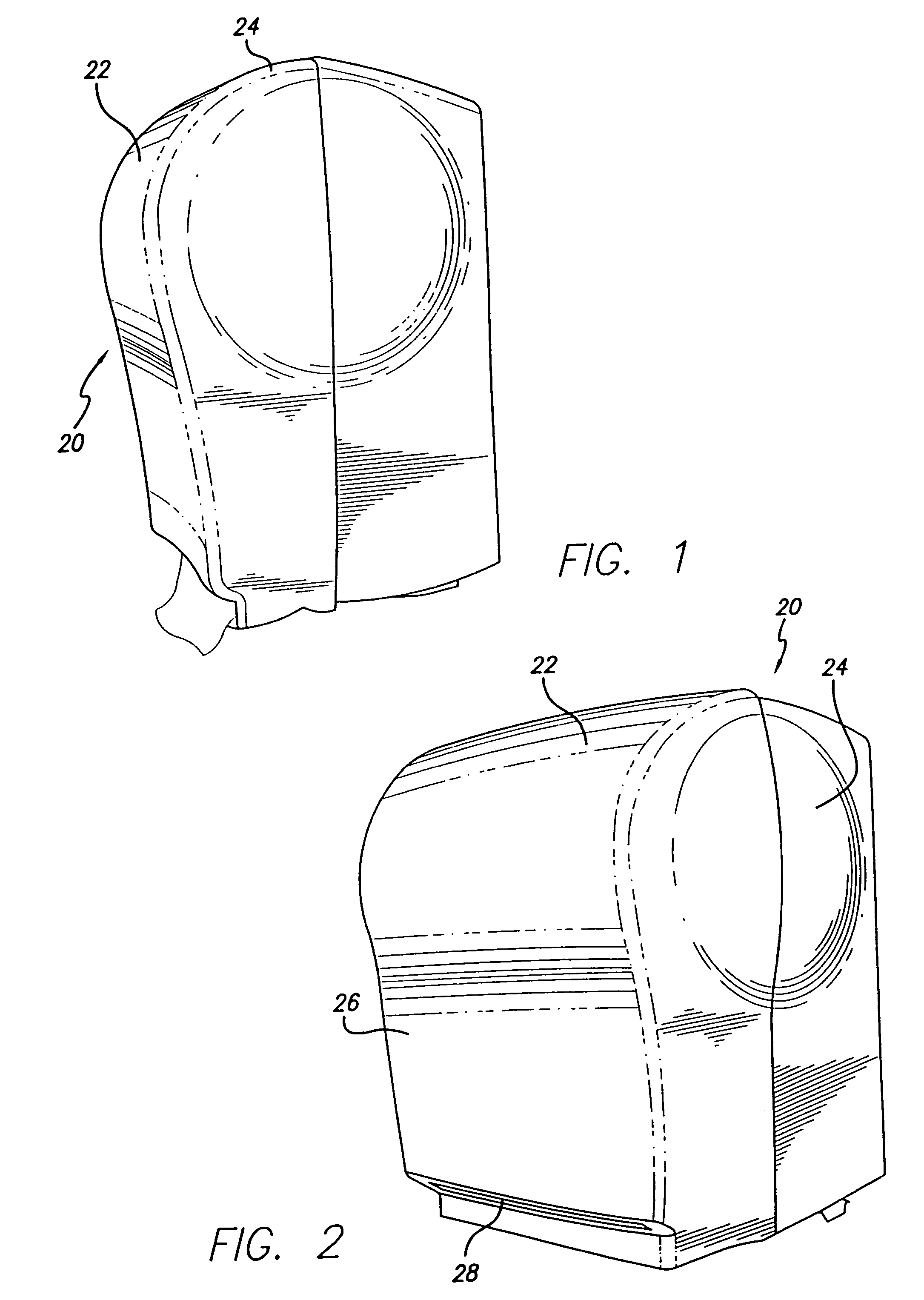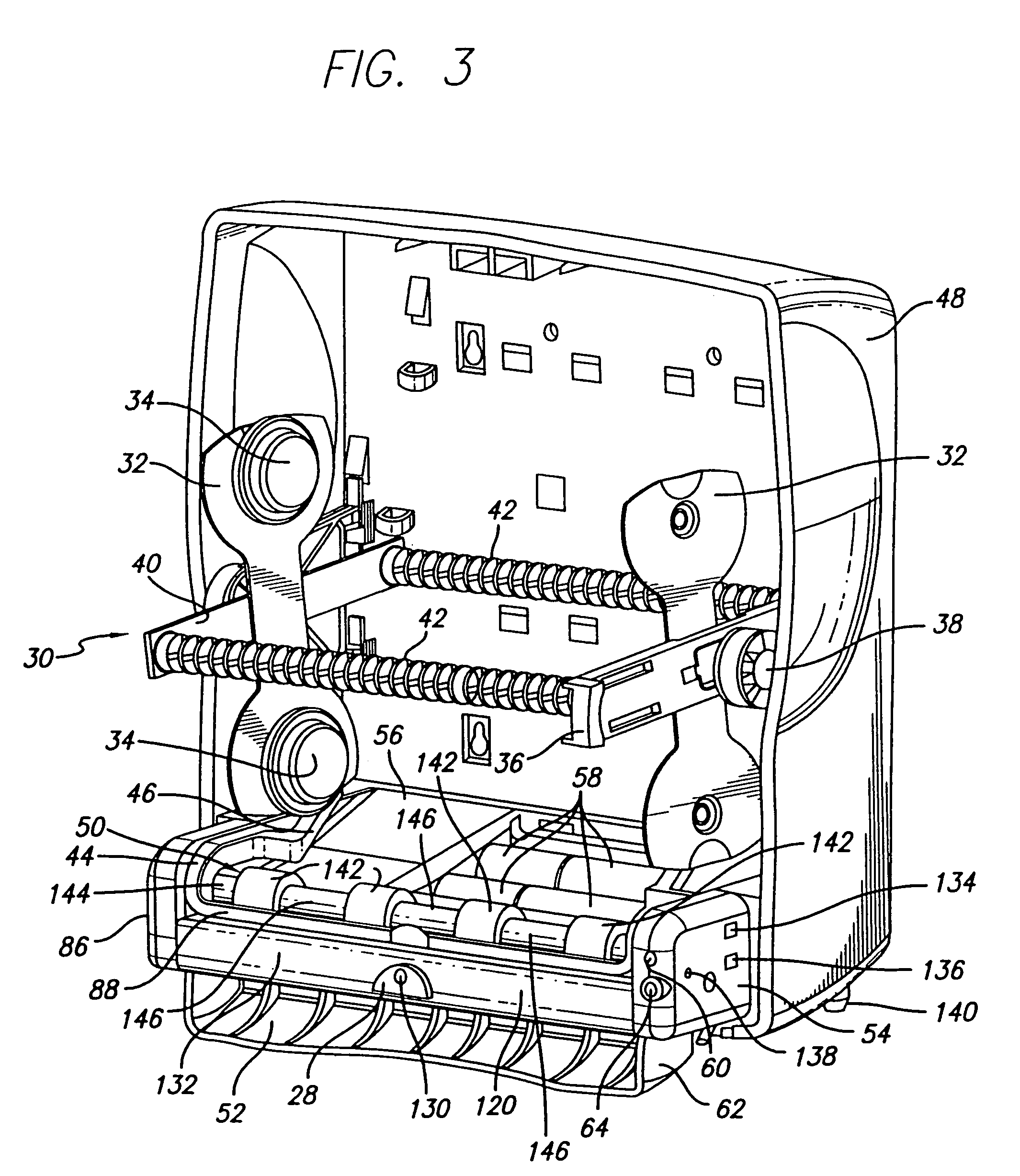Static build-up control in dispensing system
a technology of static electricity and dispensing system, which is applied in the direction of electrostatic charges, thin material processing, domestic applications, etc., can solve the problems of less frequent use of transfer devices, difficult loading and/or operation of transfer devices, and difficult procedures, etc., to achieve the effect of controlling the buildup of static electricity
- Summary
- Abstract
- Description
- Claims
- Application Information
AI Technical Summary
Benefits of technology
Problems solved by technology
Method used
Image
Examples
Embodiment Construction
[0055]The following description is of the best mode presently contemplated for carrying out the invention. This description is not to be taken in a limiting sense, but is merely made for the purpose of describing the general principles of the invention. The scope of the invention should be determined with reference to the claims.
[0056]An embodiment of the invention comprises a carousel-based dispensing system with a transfer bar for paper towels, which acts to minimize actual wastage of paper towels. As an enhancement and further development of a system for delivering paper towel to the end user in a cost effective manner and in as user-friendly manner as possible, an automatic means for dispensing the paper towel is desirable, making it unnecessary for a user to physically touch a knob or a lever. An electronic proximity sensor is included as part of the paper towel dispenser. A person can approach the paper towel dispenser, extend his or her hand, and have the proximity sensor det...
PUM
 Login to View More
Login to View More Abstract
Description
Claims
Application Information
 Login to View More
Login to View More - R&D
- Intellectual Property
- Life Sciences
- Materials
- Tech Scout
- Unparalleled Data Quality
- Higher Quality Content
- 60% Fewer Hallucinations
Browse by: Latest US Patents, China's latest patents, Technical Efficacy Thesaurus, Application Domain, Technology Topic, Popular Technical Reports.
© 2025 PatSnap. All rights reserved.Legal|Privacy policy|Modern Slavery Act Transparency Statement|Sitemap|About US| Contact US: help@patsnap.com



